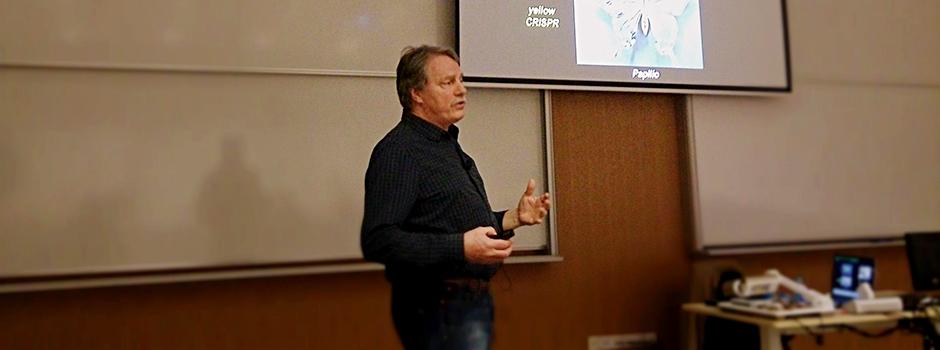A projection of colorful tessellations appeared at first to be a work of abstract art but was actually the depiction of randomly distributed color photoreceptor cells of a fruit fly.
Claude Desplan, D.Sc./Ph.D., a Silver Professor in the Department of Biology at New York University, enlightened his audience on aspects of color vision and its development, evolution and mapping to the brains in flies on November 24.
His recent research with Drs. Michael Perry and Robert Johnston expressed how a “conserved regulatory code defines and expands photoreceptor subtypes between flies (Drosophila) and butterflies (Papilio xuthus and Vanessa cardui).” Examples in the insect world illustrate the flexibility of the visual system to adapt to specific circumstances that fit the lifestyle of the animal.
Desplan brought out the science behind how butterflies identify specifically colored flowers for food sources, and how a male fly’s "love spot" eye functions to target movement of potential mates. He showed how these changes rely on molecular variations that can be explained in simple evolutionary terms.


